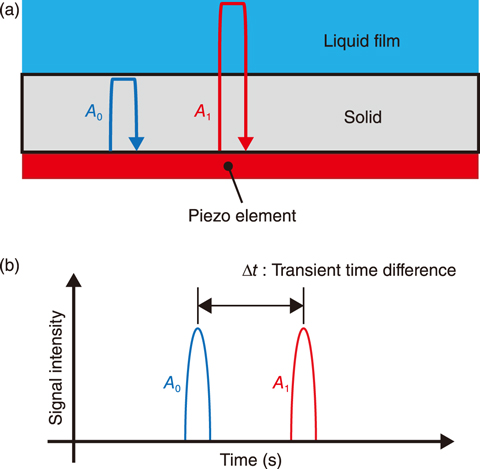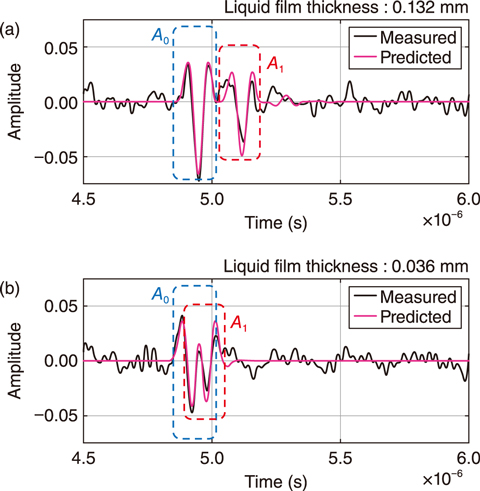
Fig.2-4 Conceptual design of liquid film thickness measurement technique using ultrasound

Fig.2-5 Received signals using the developed device to measure the liquid film thickness
In a light water reactor (LWR), if the core power suddenly rises, evaporation from the liquid film covering the fuel cladding increases rapidly, causing the liquid film to be depleted and the cladding surface to be exposed. This phenomenon, known as dryout, causes an increase in the surface temperature of the fuel cladding. In most cases, dryout is temporary, and eventually the cladding surface is covered with the liquid film again due to a decrease of core power. This behavior, known as rewetting, is an important phenomenon from the viewpoint of ensuring the fuel integrity.
Prior researchers have monitored the liquid film thickness by measuring the cladding surface temperature or have investigated the behavior of the liquid film during dryout and rewetting. The liquid film thickness at dryout and rewetting is considered to be 0.1 mm or less for actual LWR condition. There was no technique to measure such thin liquid film under high pressure and high temperature condition. Therefore, in this study, we aim to develop a non-intrusive and high-precision thin liquid film measurement technique using ultrasound.
For this purpose, the first goal was set to measure the thickness of a liquid film less than 0.1 mm in thickness with high accuracy. In the liquid film thickness measurement using ultrasound, as shown in Fig.2-4(a), ultrasound waves are emitted from a piezo element mounted outside of the solid wall toward the liquid film existing on the opposite side of the mounting surface. The liquid film thickness can be calculated based on the sound speed and the transient time difference between the waveforms reflected from the solid-liquid interface and the liquid film surface (A0 and A1, respectively), as shown in Fig.2-4(b).
For the accuracy even for measuring very thin liquid films, high frequency and high damping ratio are required for the carrier signal, which was the biggest development factor in this study. We have developed a device that generates ultrasound waves at a frequency approximately 10 times that of device applied in conventional study with a high damping ratio so that the emitted waveform is near a single pulse waveform. The resulting waveforms detected when measuring the film thickness, shown in Fig.2-5, shows two distinct waveforms, indicated by the dashed red and blue lines. These waveforms correspond to the reflected waveforms indicated in Fig.2-4. Here, a clearer separation of the two waveforms allows for a more accurate measurement; for very thin liquid films, the two waveforms may partially overlap, as shown in Fig.2-5(b). To address this issue, we have developed a liquid film thickness evaluation method using the predicted signal that matches the measured signal by ultrasound propagation analysis. The signal predicted by the proposed method is confirmed to match the measured signal, as shown in Fig.2-5.
Currently, this technique is available only at atmospheric pressure and room temperature. Efforts to make the necessary technical developments enabling liquid film measurement under actual LWR conditions are ongoing.
(Yuki Wada)
<Previous: 2 Research on Nuclear Safety and Emergency Preparedness | Next: 2-2>